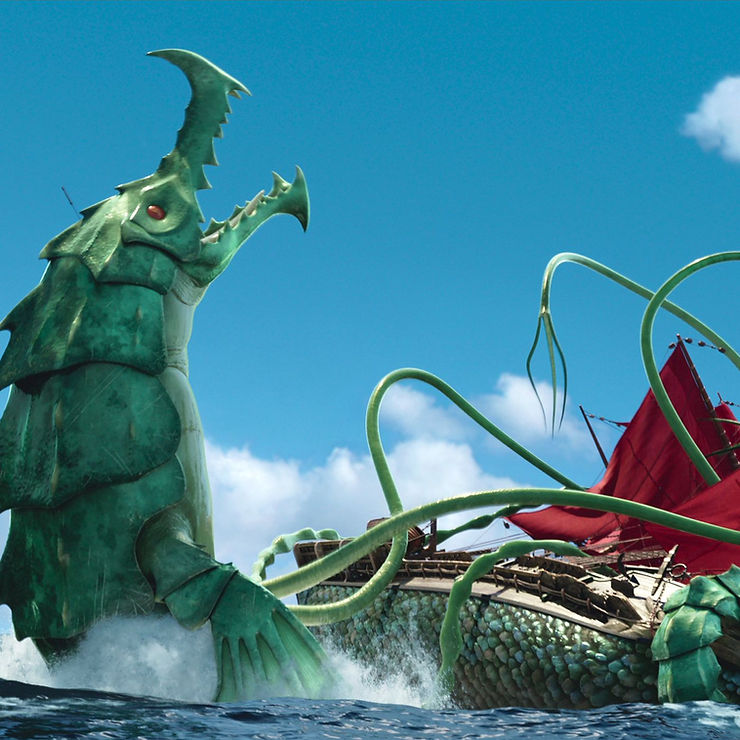By: Alex Chu
A new animated Netflix film The Sea Beast has just premiered. To create animated characters, you must be super precise and get everything exactly correct. “I watched videos of tiny cameras navigating nasal passages,” said Chris Williams director of The Sea Beast. The impetus for Williams’s nasal-knowledge gathering was a scene in “The Sea Beast,” on Netflix, which may be the most ambitious digitally animated project the streaming company has undertaken to date.
The Sea Beast was written by Chris Williams and Nell Benjamin. The movie takes place in a fantasy world where groups of hunters battle colossal monsters with wooden ships. It’s about the protagonist Maisie who is voiced by Zaris-Angel Hator, a daughter of two fallen monster hunters and escapes home to join a ship crew called the Inevitable. Maisie meets Jacob, voiced by Karl Urban. Jacob oversees Maisie’s tasks on the ship. Maisie hopes to become captain one day. The main mission is to fight the Red Bluster Monster but it windy and both characters find themselves in the Red Bluster’s nostrils.
The main part of Williams team was to get the skin correct to make it monster look realistic and convincing. To “sweat the details,” in Williams’s words. “Hopefully we cast a spell where the audience gets a sense of a deep history,” he said. “We wanted her [the monster’s] skin to be beaten up because she’s been through many battles with the hunters,” said Woonyoung Jung, the movie’s art director. The monster is scratched and has scarred horn protrudes. “We relate easier to mammals than to insects or fish,” Matthias Lechner, the production designer, said. “So, the monsters that were adversaries were more hard-shell.” For example, they made photo realistic hairs to make it more attractive.
The placement of the eyes are like that of lizards’, above the ridges and on the sides of her head. Jacob and Maisie notice this when they stand in front of both eyes directing the Red Bluster where to swim. “It places a little bit of an emotional barrier between the audience and the creature,” Williams said, “something they have to overcome.” “There had to be a place for them to stand,” Lechner said.
The monster is huge! This physical trait is very noticeable early in the movie and it causes lots of challenges because it makes the monster distant from human experience. “You could go Godzilla giant, but at some point, it’s not relatable to humans anymore,” Lechner said. “So a lot of this movie was figuring out scales that are impressive as much as possible, but that still relate.” The size also needed to be manageable to fit the humans just right into the scene especially the fight scene. To decide on a good size for the monster, the animation crew used the ocean as a measuring scale. “We know water,” Lechner explained, “so we can judge distances and scale according to the water quite easily. It’s like a ruler.”











